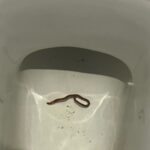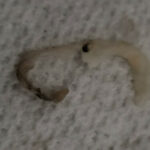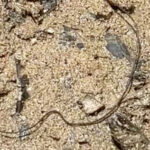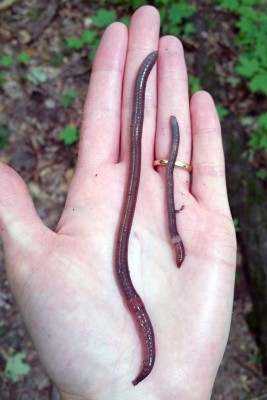Although screwworms have been eradicated from Central America, Mexico, and the United States, they can still be found in Africa, India, the Caribbean, South America, and in Southeast Asia. The biggest fear for the U.S. Department of Health is that the screwworm will make its way back into the U.S. through an infected animal. If this happens, screwworms can infest the hides of more animals–destroying them, or even killing the host. You see, screwworms feed on animals, literally. They eat the living tissue of all warm blooded animals, but they prefer to feast on birds, sheep, cattle, and goats.
Animals become infected with screwworm after a female fly lays eggs on a wound. They typically lay the eggs directly on or inside of a wound. The wound does not have to be large. In fact, the wound can be as small as a tick or other incest bite. Other wounds commonly infected include wire cuts, dehorning wounds, and branding wounds. According to The Center for Security and Public Health at Iowa State University, navels of newborn baby animals are also common “wound” sites for screwworms.
Although animals are more likely to become infected with screwworms, humans can get screwworm as well. The fly will infect a human the same way as animals. If the fly senses an open wound of any kind, it will deposit eggs there. The eggs will hatch into larval screwworm and begin feeding on living tissue of both humans and animals. Upon close examination, movement may be seen inside of a wound. The wound will become larger and deeper as the screwworms fed. More than 200 screwworms may be feeding in the wound at one time, resulting in a smelly, bloody fluid that will continually seep from the wound.
To stop screwworms from entering the U.S., all animals from countries that have not eradicated the worm are inspected by a vet. The animals are not allowed into the country until they are thoroughly examined. The vet will examine the animals for larvae and flies. CSPH at the University of Iowa states that “The larvae are cylindrical with one pointed end and one blunt end and have rings of dark brown spines around the body. Female screwworm flies are larger than a housefly with a dark blue to blue-green body and reddish-orange head.”
To protect yourself from screwworms, when visiting other countries where screwworms are a problem, you should cover any wounds you think you may have and avoid flies at all costs. It only takes a second for the fly to lay eggs, so be on the defensive at all times. If you suspect that you have a screwworm infection, visit a doctor immediately. If you work with any of the animals listed in this article, and you think one of your animals has an infection, take him to the vet immediately. Do not try to treat the infection on your own.
Source
The Center for Security and Public Health at Iowa State University
http://www.cfsph.iastate.edu/FastFacts/pdfs/screwworm_myiasis_F.pdf
All About Worms is always free, always reader-supported. Your tips via CashApp, Venmo, or Paypal are appreciated! Receipts will come from ISIPP Publishing.













One year ago, I was seen by a dermatologist for what he said was a roundworm infection. I was treated with oral Ivermectin. Three weeks later I was at the ER for severe abdominal pain. The dr did a rectal exam and pulled out a 4″ worm. It was sent to the lab where the test was botched. I know it was a screwworm. The Next day I passed two more in the shower. My health is deteriorating and no dr will help me. I live in WA state, but am originally from OR. I don’t know how long I’ve had these, but wonder if I contracted it 15 yrs ago when I was bitten by a tick and contracted Lyme Disease. I still suffer with the disease. Any comments or help? Thank you! Marilyn